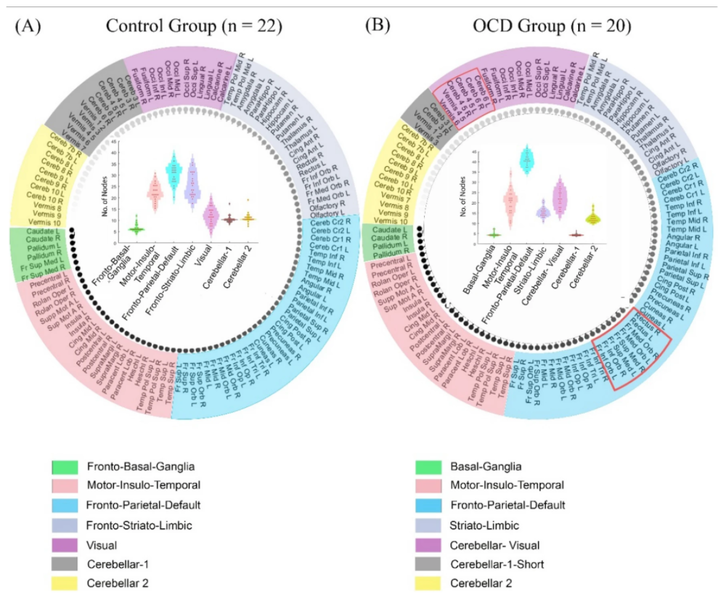Individual-fMRI-approaches reveal cerebellum and visual communities to be functionally connected in obsessive compulsive disorder

Abstract
There is significant interest in understanding the pathophysiology of Obsessive–Compulsive Disorder (OCD) using resting-state fMRI (rsfMRI). Previous studies acknowledge abnormalities within and beyond the fronto-striato-limbic circuit in OCD that require further clarifications. However, limited information could be inferred from the conventional way of investigating the functional connectivity differences between OCD and healthy controls. Here, we identified altered brain organization in patients with OCD by applying individual-based approaches to maximize the identification of underlying network-based features specific to the OCD group. rsfMRI of 20 patients with OCD and 22 controls were preprocessed, and individual-fMRI-subspace was derived for each subject within each group. We evaluated group differences in functional connectivity using individual-fMRI-subspace and established its advantage over conventional-fMRI methodology. We applied prediction-based approaches to highlight the group differences by evaluating the differences in functional connections that predicted the clinical scores (namely, the Obsessive–Compulsive Inventory-Revised (OCI-R) and Hamilton Anxiety Rating Scale). Then, we explored the brain network organization of both groups by estimating the subject-specific communities within each group. Lastly, we evaluated associations between the inter-individual variation of nodes in the communities to clinical measures using linear regression. Functional connectivity analysis using individual-fMRI-subspace detected 83 connections that were different between OCD and control groups, compared to none found using conventional-fMRI methodology. Connectome-based prediction analysis did not show significant overlap between the two groups in the functional connections that predicted the clinical scores. This suggests that the functional architecture in patients with OCD may be different compared to controls. Seven communities were found in both groups. Interestingly, within the OCD group but not controls, we observed functional connectivity between cerebellar and visual regions, and lack of connectivity between striato-limbic and frontal areas. Inter-individual variations in the community-size of these two communities were also associated with the OCI-R score (p < .005). Due to our small sample size, we further validated our results by (i) accounting for head motion, (ii) applying global signal regression (GSR) in data processing, and (iii) using an alternate atlas for parcellation. While the main results were consistently observed with accounting for head motion and using another atlas, the key findings were not reproduced with GSR application. The study demonstrated the existence of disconnectedness in fronto-striato-limbic community and connectedness between cerebellar and visual areas in OCD patients, which was also related to the clinical symptomatology of OCD.